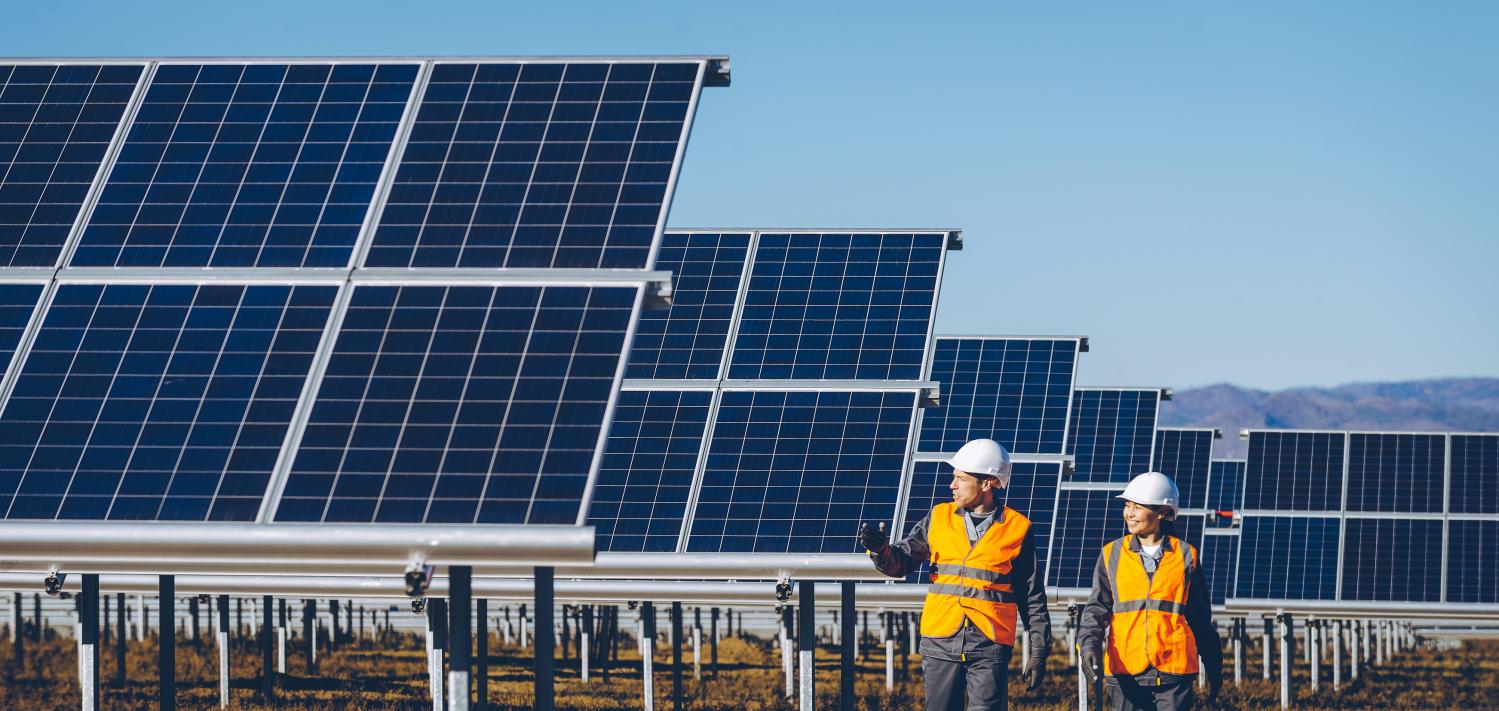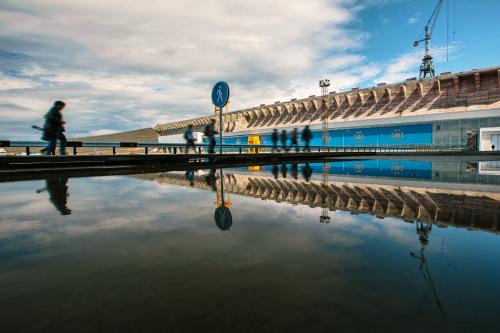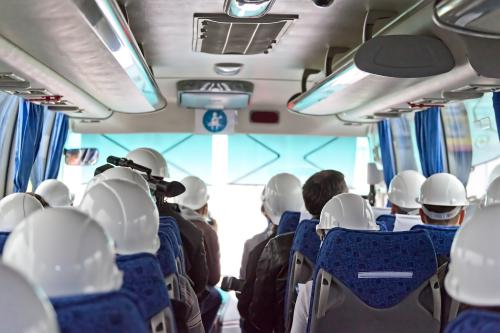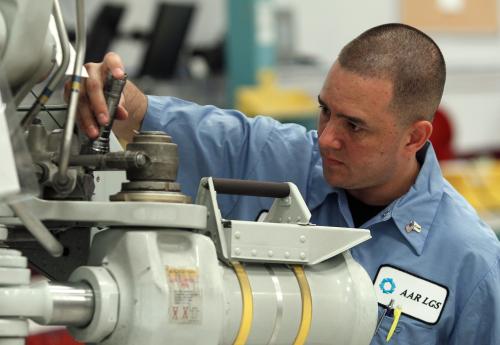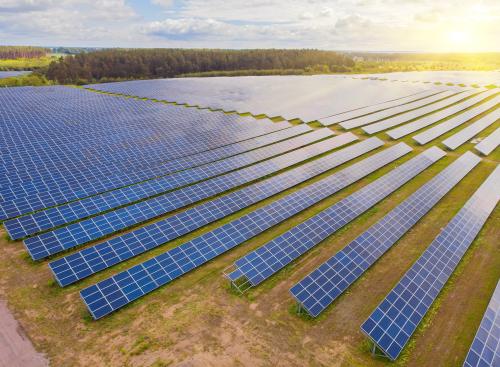Contents
The transition to a clean energy economy continues. Motivated by mounting scientific evidence, shifting market forces, and in some cases policy, U.S. industries are installing more zero-carbon energy sources, developing more energy-efficient products, and adopting more environmentally-sensitive standards. More recently, debates have broken out in Congress over the need for an ambitious Green New Deal centered on clean economy employment. The result: Shifts in “green jobs,” carbon emissions, electricity consumption, and resilience to climate shocks have become some of the highest profile, most discussed trends of the decade.
Considerably less attention has been paid to the types of workers, activities, and skills needed in years to come. We still know relatively little about the nature of the work associated with the clean energy transition and the specific occupations necessary to deliver a vibrant clean energy economy moving forward.
Focused squarely on the workforce side of the clean energy transition, this analysis aims to help energy sector professionals, state and local policymakers, regional education and training sector leaders, and community organizations get a clearer look at the nature, needs, and opportunities associated with the future clean energy workforce. In particular, this analysis explores the extent to which such occupations will offer pathways to inclusive economic opportunity. For additional information on the report’s methods and data sources, see Appendix A.
Why clean energy jobs matter
The report employs federal datasets and industrial classifications from prior clean energy economy research to conclude that:
- The transition to the clean energy economy will primarily involve 320 unique occupations spread across three major industrial sectors: clean energy production, energy efficiency, and environmental management. These occupations represent a range of workplace responsibilities, from jobs unique to the energy sector to support services found throughout the broader economy. Read more about clean energy sector occupations on page 14.

- Workers in clean energy earn higher and more equitable wages when compared to all workers nationally. Mean hourly wages exceed national averages by 8 to 19 percent. Clean energy economy wages are also more equitable; workers at lower ends of the income spectrum can earn $5 to $10 more per hour than other jobs. Read more about wages in clean energy sectors on page 16.

- Even when they have higher pay, many occupations within the clean energy economy tend to have lower educational requirements. This is especially true within the clean energy production and energy efficiency sectors, which include sizable occupations like electricians, carpenters, and plumbers. Roughly 50 percent of workers attain no more than a high school diploma yet earn higher wages than similarly-educated peers in other industries. Read more about educational attainment for clean energy occupations on page 18.

- Occupations within the clean energy production and energy efficiency sectors tend to require greater scientific knowledge and technical skills than the average American job. Conversely, knowledge and skill requirements in environmental management occupations trend towards national averages. Read more about clean energy sector knowledge and skill requirements on page 22.

- The clean energy economy workforce is older, dominated by male workers, and lacks racial diversity when compared to all occupations nationally. Fewer than 20 percent of workers in the clean energy production and energy efficiency sectors are women, while black workers fill less than ten percent of these sector’s jobs. Read more about the demographics of clean energy sectors on page 25.

Making clean energy SECTORS more INCLUSIVE
The relative accessibility of clean energy work has the potential to attract and employ workers from all backgrounds. And yet, a number of obstacles are preventing underrepresented populations from accessing these relatively high quality jobs. One obstacle is a lack of young talent entering the clean energy economy, where the median age of workers continues to edge higher. Another issue is that employers frequently note hiring difficulties for new workers, who are said to lack relevant training, experience, and technical skills. And there is the continuing lack of racial and gender diversity in certain occupations. Read more about these specific barriers to clean energy workforce hiring, training, and retention on page 29.
Given these challenges, there is an urgent need now to develop a clean energy workforce playbook to modernize clean energy related education, improve the alignment of training, and to reach underrepresented workers and students. At least three priorities should anchor such a playbook, informed by multiple emerging models in use around the country:
- Modernizing and emphasizing energy science curricula should be a priority at all levels of education. Extracurricular, supplemental, and short-term programs as well as associate degree programs will be especially important.
- Improve the alignment of education and training offerings—including through the use of “experiential” or on-the-job learning. Public/private partnerships and on-the-job learning will be imperative.
- Reach underrepresented workers and students. Rooting out bias in key segments of the sector is a prerequisite for progress, as will be early inclusion, pre-apprenticeships, gender- or race-focused cohort strategies, and locally-grounded neighborhood outreach. Read more about broadening the clean energy workforce on page 30.
The Brookings Institution is committed to quality, independence, and impact.
We are supported by a diverse array of funders. In line with our values and policies, each Brookings publication represents the sole views of its author(s).




